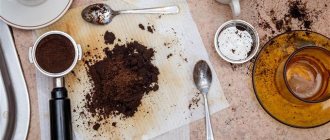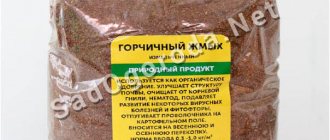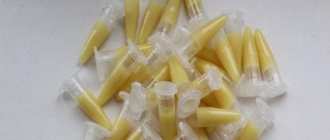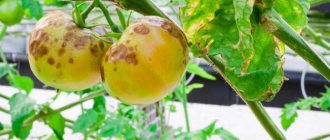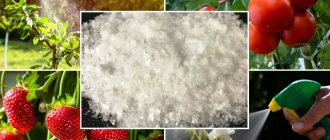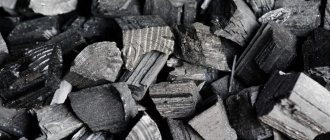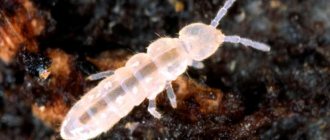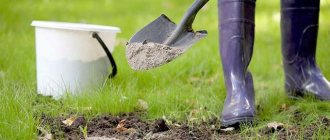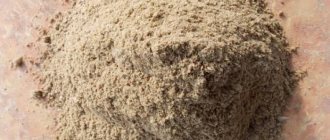Coffee invigorates not only people, but also plants! If you are an avid coffee drinker, do not rush to throw away the spent grounds. Make it “work” for your harvest with the help of our tips.
Many of us cannot imagine our morning without a cup of aromatic strong coffee. This black drink has a truly “magical” effect on the body: thoughts become clearer, performance and mood improve. Did you know that coffee can affect plants in much the same way? Of course, with proper use!
Coffee as fertilizer
Naturally, the effectiveness of coffee cannot be compared with any fast-acting fertilizer, and certainly not a substitute for complex fertilizing. But it is worth recognizing that adding coffee grounds to the soil around plants has a beneficial effect on them.
Decaying organic matter increases the biological activity of the soil. Firstly, it saturates the soil with nitrogen. Secondly, it attracts earthworms, which loosen the soil. Third, coffee used as a fertilizer allows plants to more easily absorb copper, magnesium, potassium and phosphorus from the soil.
Even though coffee contains 2% nitrogen, this does not mean that it can replace a complete nitrogen fertilizer. Since coffee grounds take a long time to decompose, the elements are released slowly.
There is an opinion that coffee significantly increases the acidity of the soil, so it is suitable as a fertilizer only for plants that require a low pH level (conifers, rhododendrons, heathers, etc.). However, this is not quite true. Coffee does “sour”, but only when fresh.
Sleeping coffee grounds have a neutral reaction - about pH 6.5-6.8 (with an ideal acid-base balance of pH 7). To be sure, it is advisable to rinse the grounds with clean water before using them in the garden.
How to use grounds in the garden
It can be mixed with plant seeds (carrots, beets), this will speed up germination. A mixture of soil and dry coffee substrate is placed in planting pots for seedlings; this soil mixture gives excellent results. The seedlings grow strong and can easily be transplanted into holes.
You can also scatter the substance around the rooted seedling, which will facilitate an increase in nitrogenous substances in the fertile soil layer after each watering.
Note! If you set fire to a handful of cake in the house, all the flies and mosquitoes will fly away.
Fertilizer can be buried to a depth of about 4 mm. This method will retain moisture after watering and provide an influx of oxygen into the soil.
When planting, use compost with grounds mixed with the fertile layer in half. This will provide the seedlings with the necessary nutrition.
Also, dry grounds are simply diluted with water and irrigated green spaces.
Improving the mechanical properties of soil
Spent coffee is used as a fertilizer in the country to improve the mechanical characteristics of the soil. The soil texture is improved by the biological elements of the grounds. It is especially useful to use cake on soils of heavy texture - clayey, loamy. On sandstones, coffee cake reduces acidity, which has a beneficial effect on the composition of the fertile layer.
Note! Coffee protects the garden from weeds.
However, if you regularly use cake for mulching, the soil layer can become compacted and begin to impede air permeability. Therefore, mix the substrate with fertilizers of a larger fraction.
How to use grounds to improve soil and control pests
Spent coffee grounds are widely used in the country: in the garden, vegetable garden and greenhouse. Experienced gardeners use it:
1. For mulching plantings.
2. For light acidification of the soil.
3. To improve the mail structure. Adding dried coffee to the soil mixture makes it more airy and lighter. At the same time, it is important not to pile coffee grounds in a thick layer around the plants, otherwise they can cause the appearance of a dense soil crust that prevents free access of air and moisture to the root system of the plants.
4. In addition, coffee grounds can be used to make compost, which can later be used to grow flowers, vegetable seedlings and mushrooms. To prepare it, you need to put the following in a compost pit specially designated for this purpose:
Attention! If desired, you can also add some leaves, pine needles, bone meal, and even cardboard or paper to the mixture.
All components must be mixed well, sprinkled with soil and water on top, and then use a stick to make several holes in the pile. Useful compost will be ready for use in just 4-6 weeks. During this period, you should ensure that the pile is always wet.
5. To get rid of ants and snails. Ants cannot stand the coffee aroma and will disappear from the greenhouse if you sprinkle coffee on their nests. The same applies to snails - they will stop annoying plants if you sprinkle coffee grounds on the soil around them.
6. To wean your cat from digging holes in the garden, you should use a mixture of crushed orange peels and drunk coffee. By scattering the fragrant mixture around the plants, you can be sure that the cat will not make a toilet in the beds.
Coffee grounds compost
Composting used coffee couldn't be easier - just throw the grounds into the compost heap. Again, given the controversy about its acidity, for greater peace of mind it is advisable to pre-rinse it under running water.
Following the grounds, you can also send paper coffee filters. All this will rot and benefit the plants.
The only important nuance that should be taken into account when composting is the proper selection of compost components. In addition to coffee grounds and other food waste, you need to add more “solid” components to the compost pit: straw, wood debris, manure, grass clippings, etc. Coffee grounds should make up no more than 15-20% of the total compost, otherwise it simply will not rot.
- How to make the right compost for feeding plants
Fertilizing the soil is an important part of plant growing activities. And compost is considered one of the leaders in the “world of fertilizing”.
What are the benefits of coffee grounds?
Coffee is more than just a dose of caffeine packed into a small cup. Most people, after drinking espresso or cappuccino, get rid of the grounds by throwing them in the trash. According to statistics, each person drinks 300-500 cups of coffee per year.
Assuming that we put a heaping teaspoon of coffee or 10 g into 1 cup, everyone throws out 3-5 kg of grounds annually. Before you throw away the grounds next time, you should think about how they can be reused in the garden, vegetable garden, or for plant nutrition.
Coffee grounds mulch
Many gardeners use coffee grounds as an environmentally friendly mulch. It is safe for plants, releases nutrients in the soil, enriches it with nitrogen, attracts earthworms, looks natural and is pleasing to the eye.
However, the main disadvantage of such mulch is that it can begin to mold. To prevent this from happening, we again recommend rinsing the grounds with clean water and drying them before spreading them over the soil surface.
Also, if you drink coffee with sugar and milk, naturally they will remain on the coffee grounds. Sweet mulch can attract ants and other insects. Therefore, it is necessary to wash the mass before drying.
Methods for adding coffee grounds to the soil
I’ll tell you about the known methods of using coffee fertilizer:
- Pecking seeds. Before sowing, I mix the planting material with coffee grounds. This simple measure allows the seeds to hatch faster. I also noticed that sprouting in the thicket later makes carrots and radishes very tasty, sweet and juicy.
- Landing. Before transplanting the seedlings, I add a handful of cake to each hole. To stimulate the release of nitrogen components into the soil, you just need to water the hole. I use this measure for cucumbers.
- Mulching. I spread a little dried cake over the surface of the ridge, then water it generously. The effect is similar: exposure to moisture helps enrich the soil with nitrogen.
- Digging in. The good thing about this method is that, unlike mulching, it does not contribute to the formation of a dense earthen crust. Already on the finished bed with planted plants, I pour a thin layer of cake, then very carefully dig it up with garden soil, without going deeper than 3-4 cm.
As for individual crops, I will leave additional instructions:
- Germination of seeds of garden plants. Coffee grounds are one of the components of the seedling substrate. The simplest: “one to one” with ordinary garden soil. The coffee component makes the soil more moisture-absorbing and breathable. The seeds hatch faster, and the seedlings grow stronger and healthier.
- Feeding adult garden plants. I prepare dry fertilizer for further digging or placement in holes. To do this, I mix 0.5 kg of grounds with 0.3 kg of last year's leaves, 0.2 kg of dry hay. I mix the ingredients thoroughly in a bucket and sprinkle the mixture with a thin layer of earth. After a month, the nutritious fertilizer is ready.
- Fertilizing greens. When preparing the bed, when digging, I add approximately 200 g of cake per 1 m2.
- Fertilizing strawberries. Fertilizing the grounds is necessary at the flowering stage and when the first ovaries appear. I sprinkle coffee fertilizer on the beds, cover them a little with garden soil, and water them. This feeding is also an effective counteraction to slugs.
- Feeding fruit tree seedlings. Coffee cake is used for transplanting and transshipment of seedlings. I pour it into the bottom of the holes and mix it with the soil. Having finished replanting, I water the plant with water to “free” the nitrogen.
- Feeding young fruit trees. I dig up the soil around the seedlings shallowly - no more than 5 cm. I fall asleep, focusing on the circle around the trunk, with coffee fertilizer - about 2 cups per tree. Then I fill it with garden soil and lightly tamp it with my palms.
- Feeding adult fruit trees. I pour a little coffee fertilizer around the tree trunk and then water the planting. This feeding also acts as mulch.
- Feeding perennial plants. Coffee cake is also suitable for preparing nutrient solutions for foliar application. The contact of such a composition on the leaves promotes active growth and flowering. I prepare the solution as follows: for 10 liters of water - 3-4 cups of raw materials. I water the plants with liquid fertilizer on the leaves. The next day I water it with regular water.
- Use in floriculture. Cake is also excellent drainage for potted plants. I make a drainage layer: one layer of expanded clay, one layer of thicket. I alternate them 2-3 times. Then I fill it with prepared substrate for flowers.
Pest barrier
There is an opinion that coffee grounds scattered around plants serve as a reliable barrier against slugs and snails, which can be a real scourge of some crops.
In addition, according to some gardeners, coffee can not only repel, but also destroy the larvae of insect pests, including mosquitoes and bedbugs.
Of course, in the fight against insects dangerous to the crop, you shouldn’t rely solely on coffee, but it won’t hurt to bring it to your side as an additional ally.
Using coffee grounds
I’ll tell you about the popular uses of healthy compounds that can be easily prepared from coffee leftovers.
Coffee grounds compost
Adding coffee grounds to your compost pile is its most popular use. This free fertilizer is suitable for both garden annuals and garden perennials. The most successful composition: straw + dry leaves + coffee cake. I recommend sticking to the ratio 1:1:2.
This compost is used as usual:
- for mulching;
- for application to future beds;
- for fertilizing young plants during planting and replanting;
- for digging in - feeding adult plantings.
Coffee grounds mulch
Another useful use of coffee grounds is mulch. In this role, it is an environmentally friendly composition that is safe for cultivated plants. It is distinguished by the following properties:
- Prevents the evaporation of moisture from the ground and the growth of weeds in the beds.
- Allows elements to be released into the substrate faster.
- Enriches the soil in the garden with nitrogen.
- Attracts beneficial earthworms to the site.
- It looks aesthetically pleasing and natural not only in garden beds, but also in flower beds.
Using mulch is as easy as shelling pears: first dry the cake in the sun and spread it in a 2-3 cm layer on the surface of the ground. When using such mulch, I also take into account its disadvantages:
- Over time it may become moldy. To prevent this from happening, I thoroughly rinse the mass with water and dry it thoroughly.
- May attract ants and other sweet-toothed pests. It’s not the grounds themselves that are to blame here—many people drink it with sugar. To get rid of this disadvantage, it is again important to thoroughly rinse the cake.
Soil improver
And another useful application is improving the quality of the substrate on the site with the help of coffee additives. Their use is universal: soil that is too light begins to retain moisture, while soil that is too heavy, on the contrary, becomes more moisture- and breathable.
To achieve the desired effect, it is enough from time to time to add coffee cake to the upper layer of the garden substrate, and then dig up the soil.
How to Grow Greens in Coffee
Coffee cake itself is a good substrate for growing plants at home. Of course, using it in such a role for valuable seedlings is too risky, but as an experiment, for growing greenery on a windowsill, it is an excellent solution.
Remember that coffee cake does not contain all the nutritional and mineral components necessary for plant development. Therefore, it is important to fertilize your plantings with complex fertilizers in a timely manner.
Pest protection
And another useful use of coffee cake in the garden is protection against pests. Here's what I noticed while using it:
- Slugs and snails do not grow in a garden bed covered with coffee mulch. This covering is a serious obstacle to their delicate bellies.
- Coffee cake is an effective repeller of mosquito larvae, bedbugs and other unpleasant flying creatures.
- Coffee grounds (not sweet ones, of course) also repel ants. From time to time you need to sprinkle their passages and nests with cake.
- Carrot midges are also afraid of coffee. The dried cake is poured into the grooves with the seeds. The specific aroma of the grounds will repel pests.
- You can also save radish root crops from attacks by underground insects using cake. To do this, the seeds of the plant are planted in dried coffee pulp. This “wrapper” not only scares away uninvited guests, but also serves as a top dressing that stimulates the harmonious development of the plant.
Of course, I don't use coffee as the main "strike force" against insect pests. But as an “additional weapon” its use is not superfluous.
Coffee grounds are not useless trash. Its main use in the garden is as a natural nitrogen fertilizer. The grounds are also good as mulch, a component of compost, a means of improving soil structure and a repeller of uninvited guests.
Chemical composition
The nitrogen content in coffee is not sufficient for complete nutrition and requires additional fertilizers.
Carbamide (urea) is a good mineral fertilizer. Dry coffee contains about 2% nitrogen. Compared to other fertilizers, this amount is too small for feeding. In addition, the substance dissolves slowly, so other nitrogen-containing fertilizers have to be added. It is better if it is organic:
- Humus → how to apply it as fertilizer,
- Mulch → what can be mulched, types,
- Compost → how to make it yourself.
In addition to nitrogen, the composition includes potassium, magnesium, iron, without which full physiological processes in plant life are impossible.
What is valuable in sleeping coffee?
Ground coffee of any roast level has high acidity.
During cooking, it is removed into the drink. Therefore, coffee grounds have a neutral acidity level, approximately 7pH. This means that it can be safely added to the soil without fear of acidifying the soil. The coffee grounds themselves contain potassium, manganese, nitrogen, magnesium, calcium, and phosphorus. The total amount of microelements is about 3%. This indicator is quite enough to make the use of coffee cake as a fertilizer a good feed for flowers of different types. Thus, nitrogen favors plant growth by participating in the process of photosynthesis, and phosphorus and potassium affect the flowering period and fruit formation.
The likelihood of overdose and harm to plants is reduced to zero. The concentration of microelements in sleeping coffee is optimal for both indoor flowers and garden plants.
Dry brewed coffee can be used to grow mushrooms. Compost with coffee cake as a fertilizer increases their productivity by 2 times.
Making coffee compost
Select an area where you will compost. This place should be sufficiently protected from rain and wind. Fence the area with boards or use a metal barrel for the same purpose. We make a pile of coffee grounds, old straw or withered grass, leaves, bone meal (400 g). Mix the pile thoroughly, pour a little black soil on top, and water it with water. For compost to be of high quality, it must be well saturated with moisture.
The area of the compost heap should occupy at least one square meter. These sizes contribute to rapid decomposition.
Use a wooden stick to make holes in the compost to encourage microorganisms to work.
The temperature in the pile will be around 65 degrees for the first two days. Therefore, for five or six days in a row you need to water it with water and make ventilation passages. In a month or a little earlier, the pile will no longer heat up. Once the compost has cooled, you can add earthworms to it.
If you prepared the fertilizer in the fall, then cover it until spring with leaves, spruce branches, and old warm clothes.
Unusual uses of coffee and tea
Use in the garden
Coffee can be used not only as fertilizer for the garden, but also in several other ways:
- Mulching plants. The soil around the stem is sprinkled with cake, thereby protecting and improving the properties of the soil.
- Getting compost. Spent coffee compost is great for mushrooms, flowers and vegetables.
- Pest control. Many insects cannot tolerate the pungent aroma of the collection.
- Acidification and improvement of soil quality. Cake is an effective leavening agent. It improves soil drainage in the garden plot and enriches it with essential microelements.
- Increasing seed germination. If you add a little coffee to the garden during sowing, this will help the sprouts to hatch faster.
Cucumbers, tomatoes, peppers
In the country, the cake is effectively used as a fertilizer for vegetable crops. It is mixed into the hole during planting. The product enriches the soil with minerals and protects against insects.
Young shoots of tomatoes, peppers and especially cucumbers love to be nibbled by ants, which often leads to the death of the plant. Coffee comes to the rescue. It is poured under the bush, which is good protection against pests.
Peppers and tomatoes love nitrogen fertilizing, and they also need potassium. Adding a mixture of cake and wood ash to the soil will have a beneficial effect on fruiting and protect vegetables from slugs and snails.
Potatoes, beets, radishes
Coffee grounds are increasingly being used to grow root crops. It is rich in magnesium and potassium, which improve the taste of the fruit and increase the immunity of plants.
Adding aromatic powder to the soil will repel mice from the crop. Rodents cannot stand its smell. Using coffee grounds as a fertilizer for potatoes and other root vegetables improves their quality and quantity, and also reduces the likelihood of wireworms eating the fruit.
Strawberry
Strawberries often suffer from magnesium deficiency. Its deficiency can easily be compensated by coffee cake. To do this, the pre-collected product is scattered in an even layer over the garden bed or added to water for irrigation. This method will not only compensate for the lack of microelements, but will also protect the berry crop from slugs.
Onion
Onions constantly need nitrogen fertilizers. When making a choice between chemical and organic fertilizing, you need to take into account some nuances. Onions grown organically are always smaller in size than those grown chemically, but they last longer and are practically not prone to fungus. To add the required amount of nitrogen to the soil, you need to add a little coffee during planting and dig it up.
Advantages and disadvantages
Coffee grounds act more effectively on the soil with the participation of EO preparations.
(+) Coffee has the following positive qualities:
- A substance of exclusively biological origin that cannot cause harm to representatives of the flora.
- It is unlikely that an overdose is possible, since at home it is difficult to prepare so much coffee that it exceeds the recommended application rate.
- Using coffee grounds saves other fertilizers.
- Spent powder creates favorable conditions for soil microflora, which converts plant residues into useful humus. The process will become much more effective if you use EO preparations together with coffee. Find out → types of EM drugs, application + reviews.
- Serves as an auxiliary means for the prevention and control of pests and diseases. The smell repels those insects that damage plants and transmit infection. .
(-) There are no shortcomings as such. Sometimes you can hear the opinion that ground coffee acidifies the soil. Only fresh, uncooked powder has this property. It is unlikely that anyone would think of buying coffee as fertilizer. Use one that has undergone heat treatment. And after boiling, the acidity of the grounds is neutralized. Thus, coffee does not actually affect the pH level of the soil.
Tip #1. If you have doubts about the acidity of the coffee, you can rinse the grounds with running water before drying.
